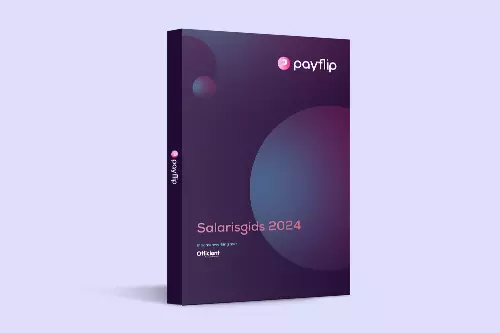Cafeteria plans are the talk of the town, that much is certain. In the corridors, it is even being called the HR trend of the coming years. But how do you get management to support the cafeteria plan? Do you run up against arguments such as "complex", "costly" and "administrative burden"? You are not the only one! Read in this blog post how, as an HR manager, you can skilfully defend your case and serve up a cafeteria plan to your team in no time.
Sharing is knowing!
In no sector is knowledge sharing as central as in the HR sector. People managers only have to log on to LinkedIn and see a mass of valuable tips about HR tools and webinars appear. If an exotic concept à la 'cafeteria plan' comes up in the feed or newsletter of a social secretariat, passionate personnel managers are quickly triggered to google it further. And they are right, because an informed HR manager is worth two!
When you google the term 'cafeteria plan', you get just under 30,000 hits in just 0.4 seconds. The search results are generally very similar: abstract articles and links to e-books or whitepapers from social secretariats. But even when a startup like Payflip advocates communicating the concept of a cafeteria plan in a more concrete and clear way (we are talking about the disadvantages of a cafeteria planhere), such communication remains rather passive.), such communication remains fairly passive.
That's why a 'second introduction' to the concept of flexible salaries in the form of a webinar is a very good move! Especially if you know that they are regularly organised during the afternoon and are free of charge ;). View a webinar onflexible pricing here .

And there was light!
Once you, as a personnel manager, have gained a better idea of the concept of the cafeteria plan, Payflip recommends you to further investigate with different providers.
These providers are right at the centre of cafeteria plan practice and can provide you with insider informationtailored to your company. Payflip, for example, attaches great importance to the questions of why you would introduce a cafeteria plan and what enthusiasm there would be in the team for a cafeteria plan. We want to avoid at all costs a situation in which a 'cafeteria plan gun' is fired at a mosquito. This is why Payflip often suggests, for example this survey to organise a survey among the staff to test the popularity of the concept.

Preparing a presentation and heading in
When the pieces of the puzzle seem to be falling together more and more, it is a good idea to summarise all the information relevant to your business in a presentation. We have already made a sample presentation about the cafeteria plan.
Such a presentation should ideally cover the following topics: the concept, the benefits for employees, the costs for the employer, a concrete example of a cafeteria plan transaction and the operations behind the cafeteria plan.
Let us explain 📣!
- A high-level introduction to the cafeteria plan concept immediately sets the tone. A breath of fresh air is injected into the salary package based on a principle that everyone loves, the "à la carte" principle. It signals a clear commitment on the part of the employer to pay employees in the way they want. What is there not to like?
- The cafeteria plan is an absolute win for employees: personal and tax-friendly(er) remuneration. An employee gets more net out of his salary package through a cafeteria plan.
- But actually, the cafeteria plan is a win-win for both the employee and the employer: the latter does not see his/her salary costs increase. You do not have to dig deeper into your pockets with a cafeteria plan, while you do jump on the bandwagon of smarter salaries! Of course, as an employer, you do have to pay a set-up fee for the plan to your service provider. Be sure to check out the very democratic pricing of Payflip here.
- Examples say more. How exactly does the employee get more net out of a transaction in the cafeteria plan? The management will probably want to understand this concept in detail, and rightly so! Make sure that the fiscal side of the cafeteria plan is also clear to you. Be sure to check the cafeteria plan e-book by Payflip for detailed examples!
- And last but not least, you should also cover your own workload vis-à-vis the management. If the cafeteria plan causes the pots to overflow in your internal HR kitchen, there is something wrong. Therefore, ask the right questions such as "is there follow-up work on the part of HR?" or "who does the communication with the social secretariat?". It is best to prepare these questions well. Be inspired by this Payflip article in which these questions are answered very concretely.
- A real insider's tip is a final slide that briefly explains the pros and cons of the cafeteria plan and gives a picture of the total cost of setting up the cafeteria plan compared with another HR cost that the company incurs or was planning to incur. An example: an SME with 15 employees pays as much for setting up the Payflip cafeteria plan as the price for one year's bicycle lease.

On-demand is here!
Flexible rewarding is a trend that cannot be denied in the current salary landscape. The on-demand principle that's flying around consumers' heads (just think of Netflix, Spotify, etc.) can certainly find its way into the salary package. Therefore: talk about remuneration before your employees do 💪.





